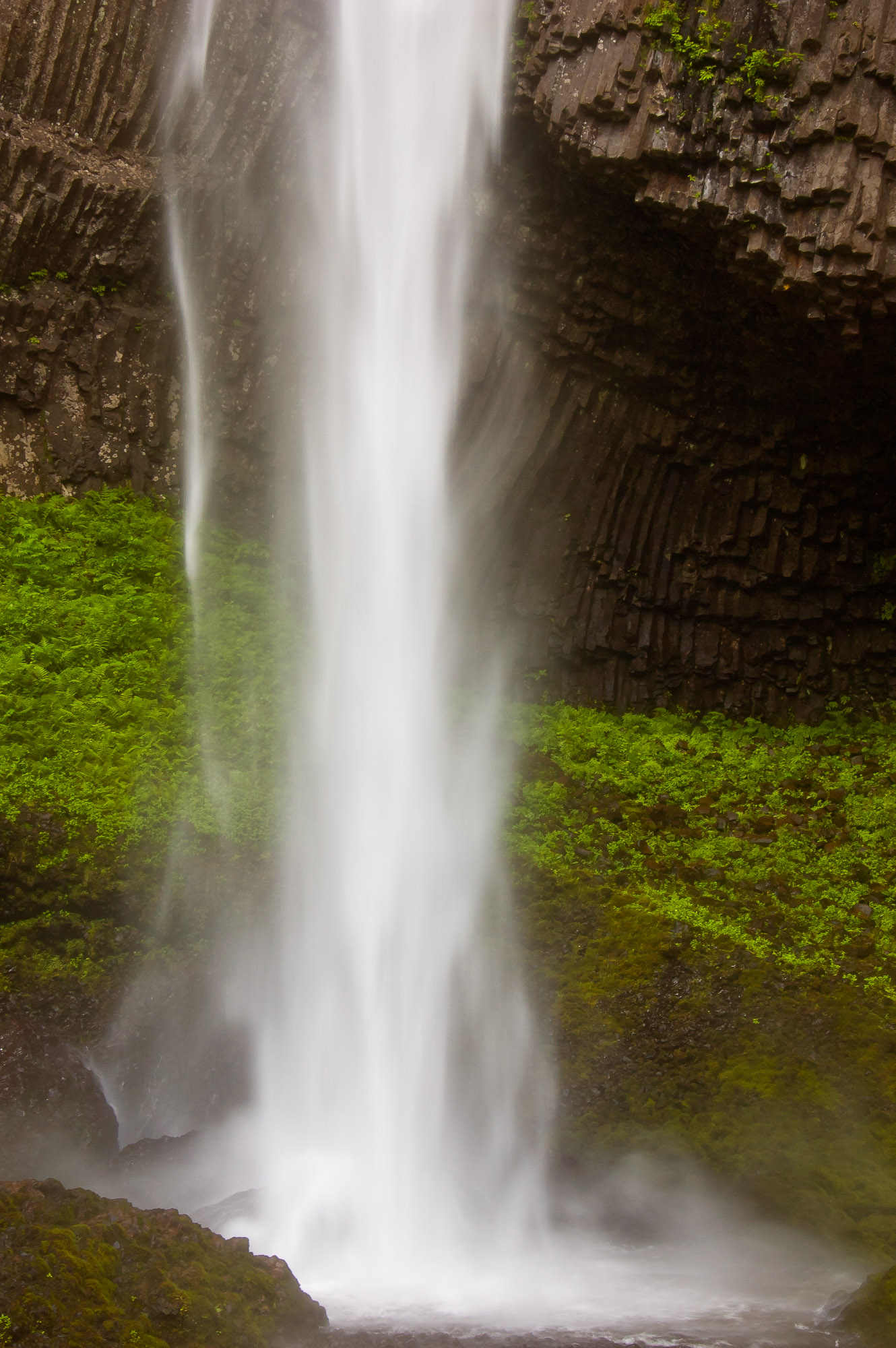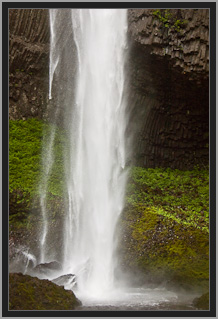A Symphony of Rock and Water — Latourell Falls

Latourell Falls is notable for the vertical columns of basalt lining the cliff behind the falls. Aesthetically, they add interest, echoing the vertical columns of falling water.
Such columnar basalt is fairly common worldwide. It forms when a layer of lava contracts as it cools. Such a layer can easily shrink vertically, but horizontally, the layer is held in place by the underlying bedrock. In response, the solidifying lava cracks into vertical columns.
In the case of the Columbia River George, the lava was laid down during a series of enormous volcanic eruptions occurring 12 to 17 million years ago. During that period, much of the area was covered by a layer of lava up to 2,000 feet thick.
The lava from the different eruptions varied in viscosity. Thinner fluid lava, such as that which formed the lower portion of the Latourell Falls cliff, solidified into a pattern of vertical columns (columnar-blocky jointing). Thicker lava, which formed the middle and upper sections of the cliff, solidified into a more randomly oriented network of short columns (entablature-colonnade jointing) which, while quite beautiful close up, is less interesting when seen from a distance. I choose to photograph only the lower portion of the falls to emphasize the visually striking columnar basalt.
Sweet Spot Shutter Speed
This photo was taken with a 1/20 sec. shutter speed, which I feel is the sweet spot for this waterfall. At slower speeds, the water becomes a featureless shroud. At higher speeds, the individual streams of water take on a broken appearance. Neither harmonizes as well with the basalt columns.

